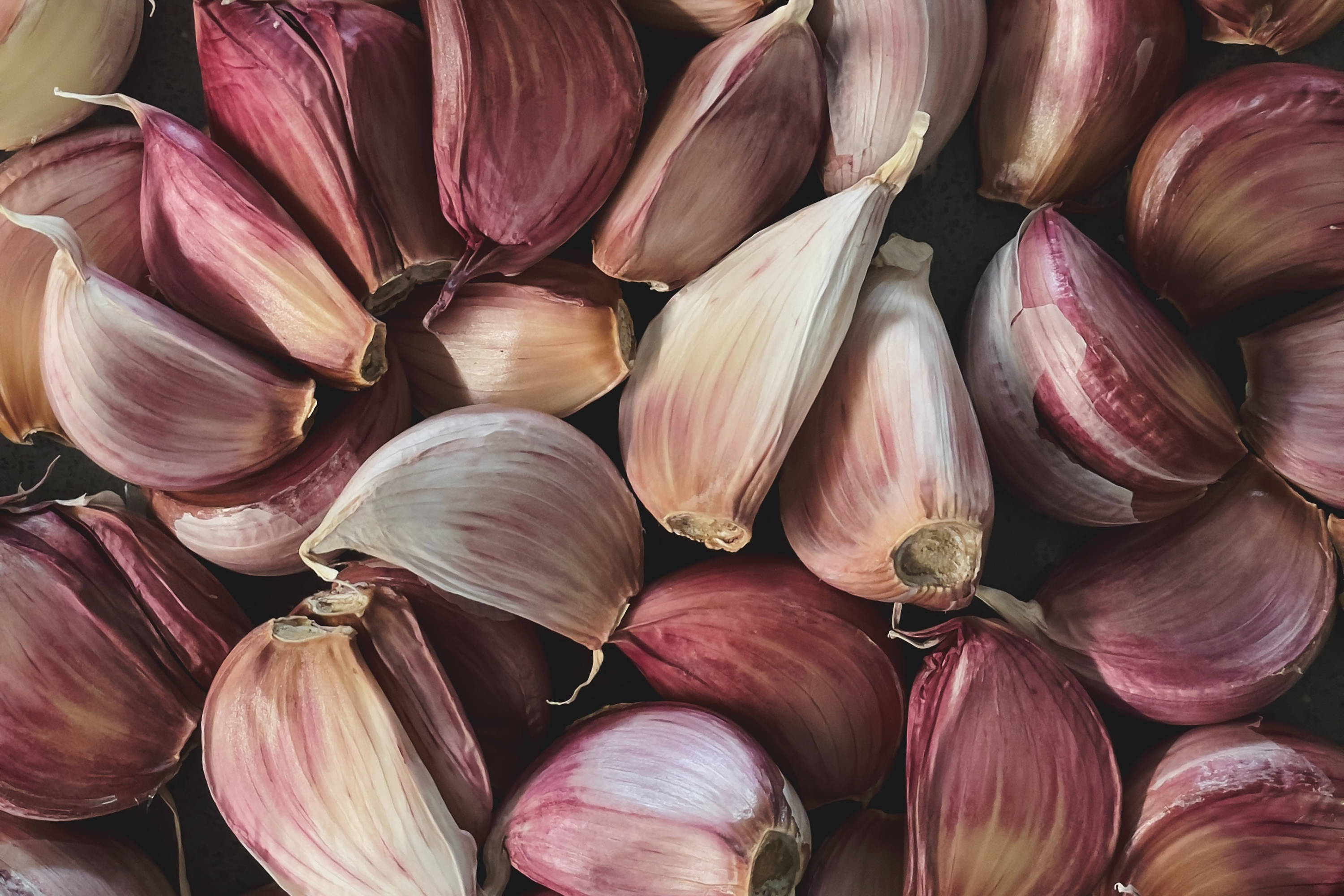Looking to buy Tasmanian grown vegetables?
Submit your interest and we will share your details with Tasmanian growers.

Tasmania produces high quality garlic which is full of flavour, succulent and has good shelf life.
In the soils of Tasmania’s south east and the north are where the vast majority of Tasmanian garlic is grown. Together with the abundance of fresh clean water, the cool temperate climate allows garlic to ripen slowly and mature with sweetness and full of flavour.
Tasmania garlic production annually is relatively small and contributes 3% of national production. National production worth $29 million. Tasmanian garlic is sold in the local market.
November–February
Garlic is harvested in these months but available year round
Turban, Asiatic, Purple stripe, Artichoke, Creole, and Silver skin
102MT
Being a remote island surrounded by water and aided by a robust biosecurity system, Tasmania remains free from many plant-related pests and diseases. This freedom means our produce can be exported with minimal, if any, phytosanitary treatment.
Tasmanian garlic is grown predominantly in the Northern Midlands and Tasman Peninsula regions of the state.
Tasmania’s relative pest free status offers trade opportunities for importing countries seeking access to Tasmanian grown produce.
This information is extracted from the Department of Agriculture Fisheries and Forestry’s Manual of Importing Country Requirements which is frequently updated. Please validate this information before proceeding further.
The importing country has no phytosanitary restrictions for entry into the market.
Open to Tasmania, without requiring any phytosanitary treatment.
Open to Tasmania but requires some phytosanitary treatment.
No arrangements have been developed to make trade between the two countries possible, or trade is currently not allowed.
Submit your interest and we will share your details with Tasmanian growers.